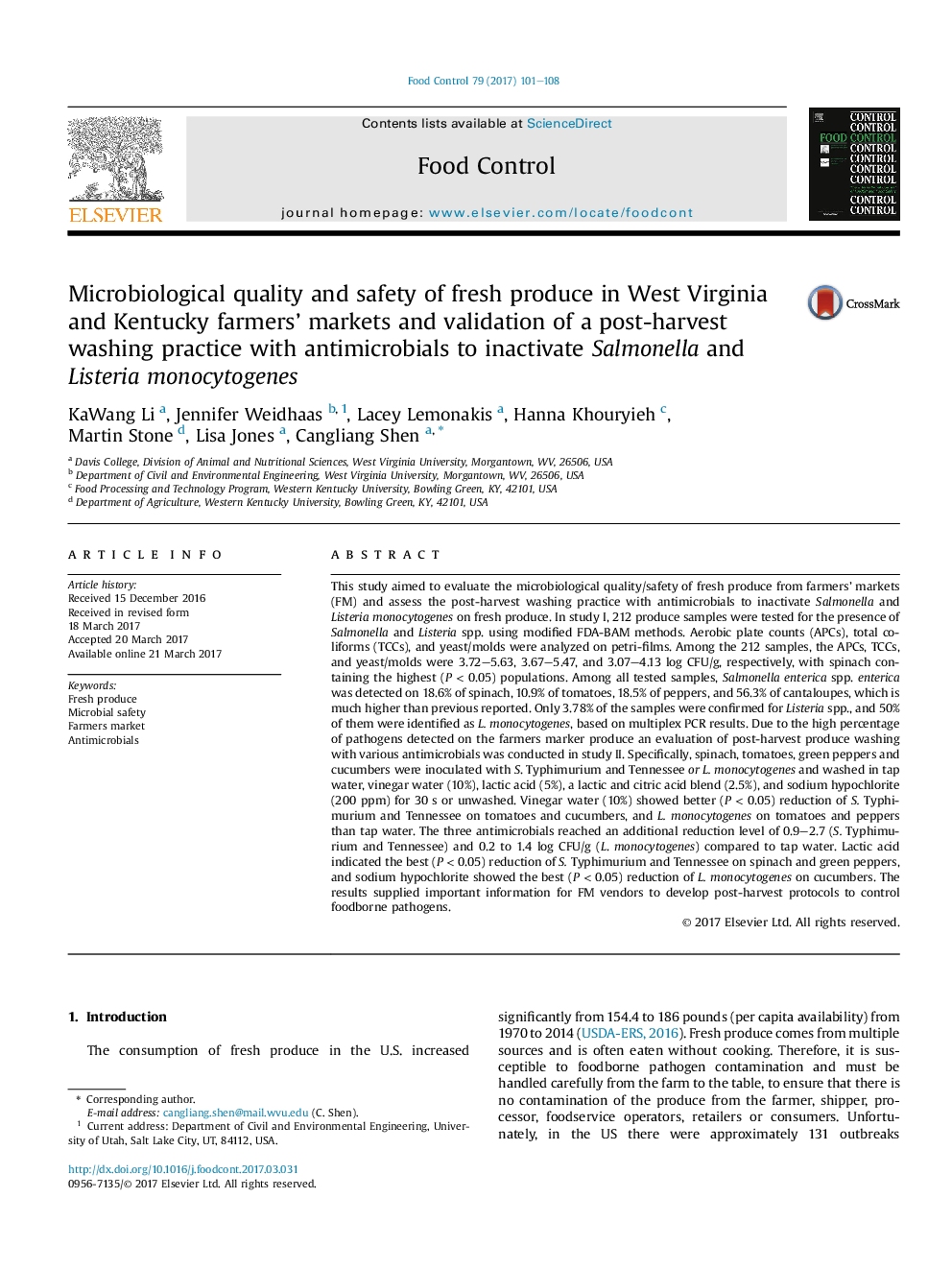| Article ID | Journal | Published Year | Pages | File Type |
|---|---|---|---|---|
| 5767438 | Food Control | 2017 | 8 Pages |
â¢Spinach contains highest amount of microbial population.â¢High percentage of Salmonella and Listeria present on fresh produce from farmers' market.â¢Apply antimicrobial washing practice reduce pathogens.â¢Developing post-harvest protocols is important among small local farmers.
This study aimed to evaluate the microbiological quality/safety of fresh produce from farmers' markets (FM) and assess the post-harvest washing practice with antimicrobials to inactivate Salmonella and Listeria monocytogenes on fresh produce. In study I, 212 produce samples were tested for the presence of Salmonella and Listeria spp. using modified FDA-BAM methods. Aerobic plate counts (APCs), total coliforms (TCCs), and yeast/molds were analyzed on petri-films. Among the 212 samples, the APCs, TCCs, and yeast/molds were 3.72-5.63, 3.67-5.47, and 3.07-4.13 log CFU/g, respectively, with spinach containing the highest (P < 0.05) populations. Among all tested samples, Salmonella enterica spp. enterica was detected on 18.6% of spinach, 10.9% of tomatoes, 18.5% of peppers, and 56.3% of cantaloupes, which is much higher than previous reported. Only 3.78% of the samples were confirmed for Listeria spp., and 50% of them were identified as L. monocytogenes, based on multiplex PCR results. Due to the high percentage of pathogens detected on the farmers marker produce an evaluation of post-harvest produce washing with various antimicrobials was conducted in study II. Specifically, spinach, tomatoes, green peppers and cucumbers were inoculated with S. Typhimurium and Tennessee or L. monocytogenes and washed in tap water, vinegar water (10%), lactic acid (5%), a lactic and citric acid blend (2.5%), and sodium hypochlorite (200 ppm) for 30 s or unwashed. Vinegar water (10%) showed better (P < 0.05) reduction of S. Typhimurium and Tennessee on tomatoes and cucumbers, and L. monocytogenes on tomatoes and peppers than tap water. The three antimicrobials reached an additional reduction level of 0.9-2.7 (S. Typhimurium and Tennessee) and 0.2 to 1.4 log CFU/g (L. monocytogenes) compared to tap water. Lactic acid indicated the best (P < 0.05) reduction of S. Typhimurium and Tennessee on spinach and green peppers, and sodium hypochlorite showed the best (P < 0.05) reduction of L. monocytogenes on cucumbers. The results supplied important information for FM vendors to develop post-harvest protocols to control foodborne pathogens.
